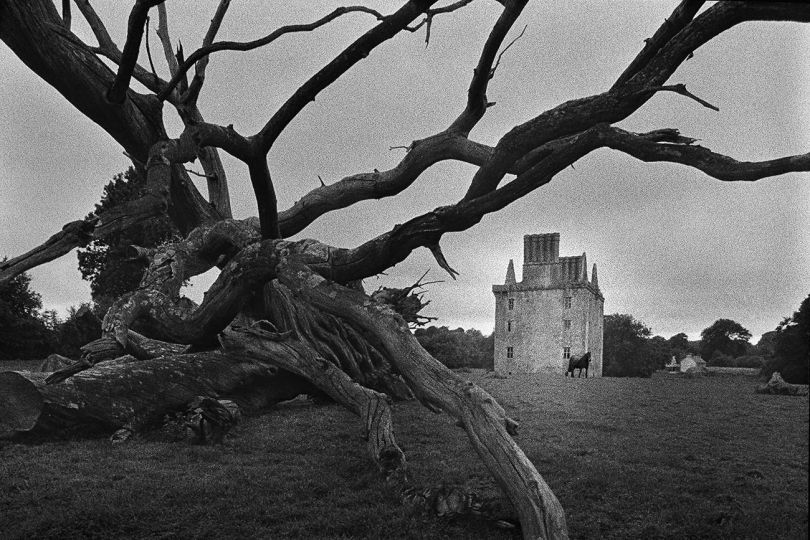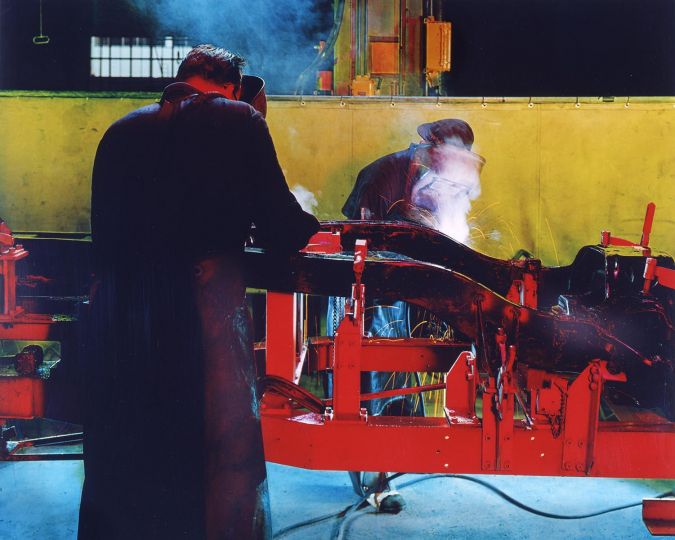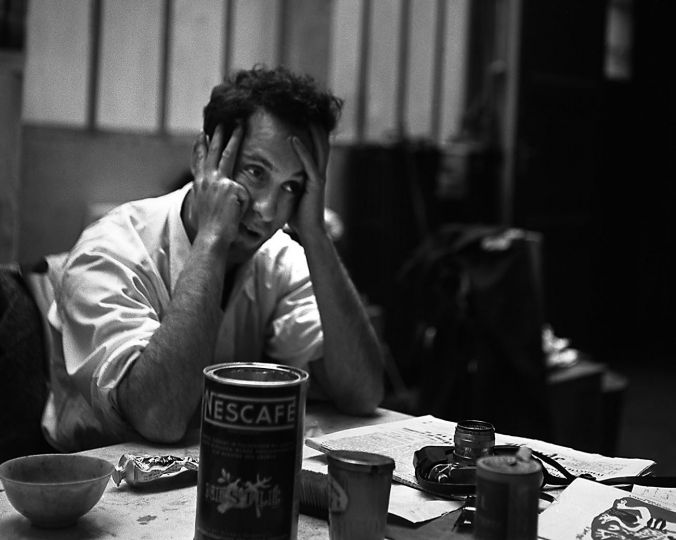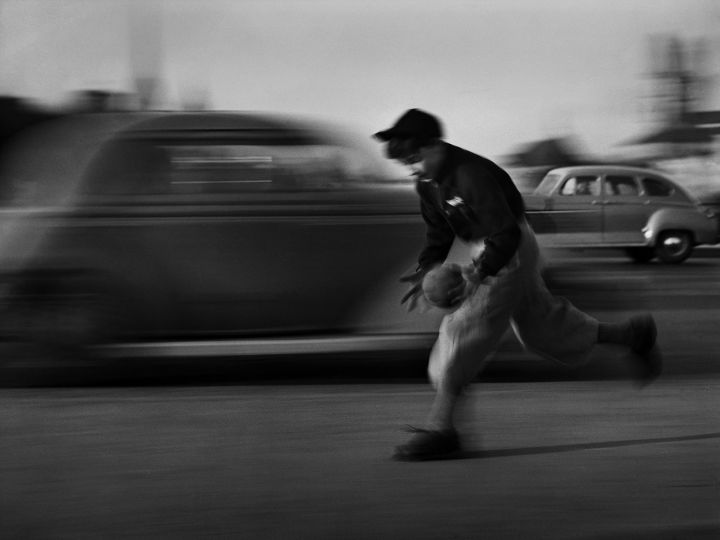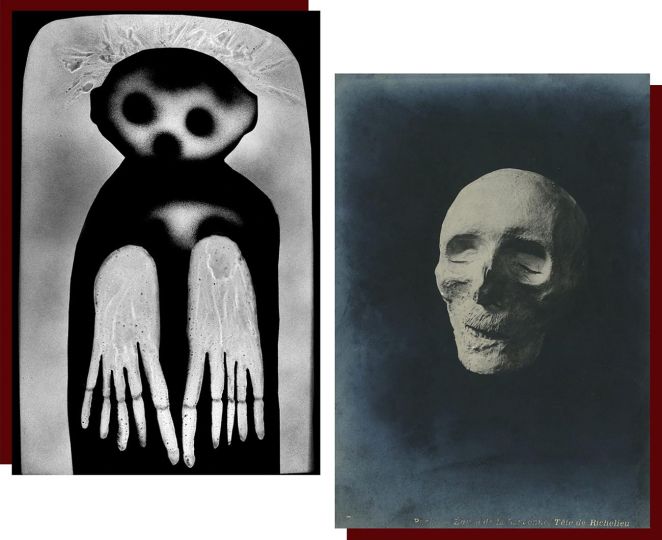Negative print: the clear view
The sky at night is black because it’s night. Obvious. You don’t need to be a scientist to know this.
A dark background with white dots or bright spots are automatically associated with the night sky and stars on a black background. Be careful. This isn’t always the case. Joan Fontcuberta’s photo series Constellations (https://www.youtube.com/watch?v=5mNLrmIR26Q#t=11) proves my point. When I saw these pictures last year at the Science Museum in London I first thought I was seeing strange constellations. I tried to recognize the patterns. Being an amateur-astronomer I know the Northern hemisphere constellations quite well. But I couldn’t put any name on the constellations in Fontcuberta’s photos. Of course it’s Fontcuberta… What I was seeing, weren’t stars, nebula, meteor trails or constellations but rain and birdshit on his windshield.
How dark is black
But the dark night isn’t black. It’s dark. Dark and black are two different things. It isn’t about shades of dark. It’s about a completely different condition.
Capturing the dark night is very challenging for a photographer. In astrophotography there’s a huge discussion going on about how dark the sky really is.
The visual observation through a telescope differs from a photo. Different kinds of magnification in a telescope give different shades in the background: the lower the magnification the more greyish the background. A higher magnification results in a darker background and sometimes dimmer the objects.
But the darkness of the background doesn’t only depend on the telescope but in the first place it depends on the light pollution. The places where you can see the Milky Way with the naked eye are becoming very scarce. It should be a human right to be able to enjoy the Milky Way.
But black is also an interpretation. If you look at the photos of the same celestial object made by different astrophotographers you will remark that their blacks are different. The American photographers prefer deeper black skies in their photos than European photographers do in general.
Compare the photos of the well known astrophotographers such as Robert Gendler (http://www.robgendlerastropics.com/), David Malin (http://www.davidmalin.com/index.html), Adam Block (http://www.caelumobservatory.com/index.html), Volker Wendel (http://www.spiegelteam.de/) or Karel Teuwen (http://www.karelteuwen.be/index.php)
But interpretation isn’t science, or is it?
For a scientist it’s not about the aesthetic value of the photo. This is generally speaking. Of course there are scientist with a very good taste and even artistic ambitions.
In science they talk about background noise. Because black is 100% lack of light. There is always a trace of light even in the darkest surroundings. Have you ever seen you shadow projected by the light of the Milky Way? That’s magic.
The longer the older
The secret of successful night and astrophotography is a long exposure time. The longer the exposure time the more stars and faint objects will be visible on a photo. I won’t go into the technical discussion about long exposure times.
The longer the exposure time the brighter the photo will be. This is obvious for photographers. In astrophotography this has a different meaning. The longer the exposure time, the deeper and further you can look in the universe. The long exposure time enables us to photograph more distant objects. Which means we look further back in time.
This is one of the most fantastic experiences in astrophotography. You always look back in time.
With a short exposure time you look back between 1.000 and 100.000 years. With very long exposure times (it also depends on the aperture of the telescope) you look millions of years back in time.
This is a big difference with traditional daytime photography. In daytime photography the photos are always about the here and now. Even if you look at old photos the photos are always a record of the moment the picture was taken.
In astrophotography the photo is always a record of a distant past.
This is one of the major challenges of astrophotographers : be able to make photos of the faintest, the most distant and the oldest celestial objects and events.
Astrophotography makes it possible to make photos of the invisible. It often happens that when I aim my telescope at a part of the sky that I want to photograph I can see nothing with the naked eye, only the darkness. After the first exposure when the photos pop up on my computer screen there appear to be a lot of stars and objects. Magic.
In the race for the deepest black, white is the winner
A professional astronomer doesn’t talk about an image or a photo but about data. For an astronomer a star isn’t blue or red but it has a specific wavelength and spectrum. The graphic on the wall replaces the framed picture. You can’t blame them, they aren’t photographers but still they use the largest cameras in the world or in space.
Since the start of astrophotography there has always been the search for the faintest details, the need to register the unseen. It wasn’t called data at that time but the search was the same. The early astrophotographers experimented with different techniques to render the faintest details from their photos.
The black starless background isn’t always the best condition for examining faint details in an astrophoto. It became quickly clear for the photographers that the negative print could register fainter details than the positive print.
They started to work on the glass plates instead of on the positive prints.
But the glass negative is fragile. The next step was to make negative prints on photo paper.
These negative prints are of an exceptional quality and beauty.
A negative print always evokes a form of alienation. A process the surrealists loved and used.
If you show a negative print of the stars (white background with black dots) to a normal viewer he won’t immediately recognize a photo of the sky and the stars. He/she expects to see the opposite a dark sky with white spots.
This distortion makes the fascinating astrophotos even more intriguing.
For photographers with experience with film photography the negative isn’t a distortion. The digital era photographers have almost no experience with the negative / positive system.
Blinking stars
In contemporary photography I associate the negative print with the recent work of the German photographer Thomas Ruff (http://www.smak.be/tentoonstelling.php?la=en&id=579). He has recently worked on a series of negative prints based on glass negatives. Thomas Ruff is also a fellow amateur-astronomer. He became well known with his series Sterne (1989 – 1992). Large positive prints with star fields based on negative prints from the European Southern Observatory (ESO). During his entire career Thomas Ruff has been playing with the negative and positive.
The ESO photos Thomas Ruff used come from a sky survey. A sky survey is a photographic celestial map made by a robotic telescope in search of changes in the sky (nova, comets, asteroids, etc). Mostly these surveys are negative prints because the faintest object is of the biggest importance.
The first sky survey was the “Carte Photographique du Ciel” (see https://www.loeildelaphotographie.com/fr/2015/04/24/in-the-collections-of/27854/la-french-connection-dans-la-photographie-astronomique-par-anamorfose) . The purpose of the Carte Photographique du Ciel was to map and count the stars. Not yet to find the changes in the sky. The Carte photographique du Ciel was a huge set of glass negatives made by 20 observatories worldwide.
But in the 19th century tradition a part of the negatives were enlarged and printed in photo gravure. A beautiful example are the photogravures made by the Belgian Royal Observatory. Unfortunately the photogravure isn’t the faintest of all printing methods. The gravures from the Carte du Ciel don’t have a lot of scientific value but they were made for outreach purposes.
In the twentieth century the sky survey was done again by the Palomar Observatory Sky Survey (POSS)and resulted in a set of about 2.000 negative prints. These gelatin silver prints are so well made that they have a lot of scientific value.
The POSS had two photos for every field of view: one in blue light and one in red light.
Later a second Survey was made by the Palomar Observatory. Now it’s possible to compare the two images ( from the first and second POSS) and find differences. This was a process already used in the early stages of astrophotography. The two plates are compared using an instrument called a blinker or comparator. The technique is very simple: the two plates are mounted side by side in some kind of microscope and if one star is missing in one of the plates it blinks for the observer. Now it’s done automatically using software.
No more fun.
© Xavier Debeerst, 2015
About the author.
Photographer, amateur-astronomer and owner of the Belgian based Anamorfose Photo Gallery (http://www.anamorfose.be) and Arcturus Observatory (http://www.debeerst.com).
Xavier Debeerst is specialized in historical astrophotography and astronomical ephemera.








